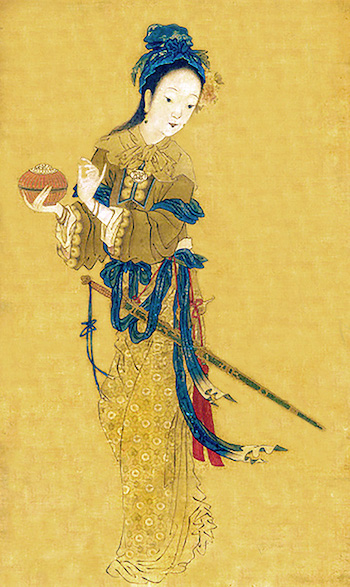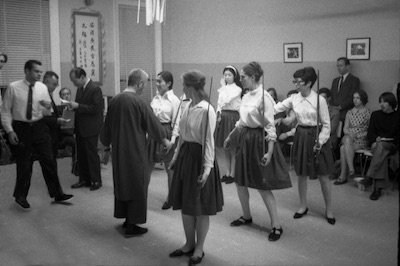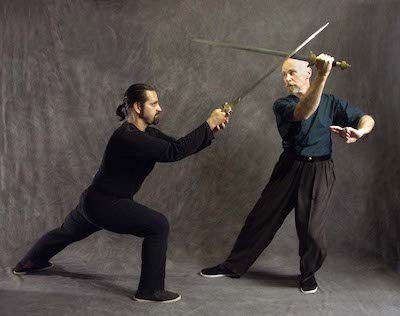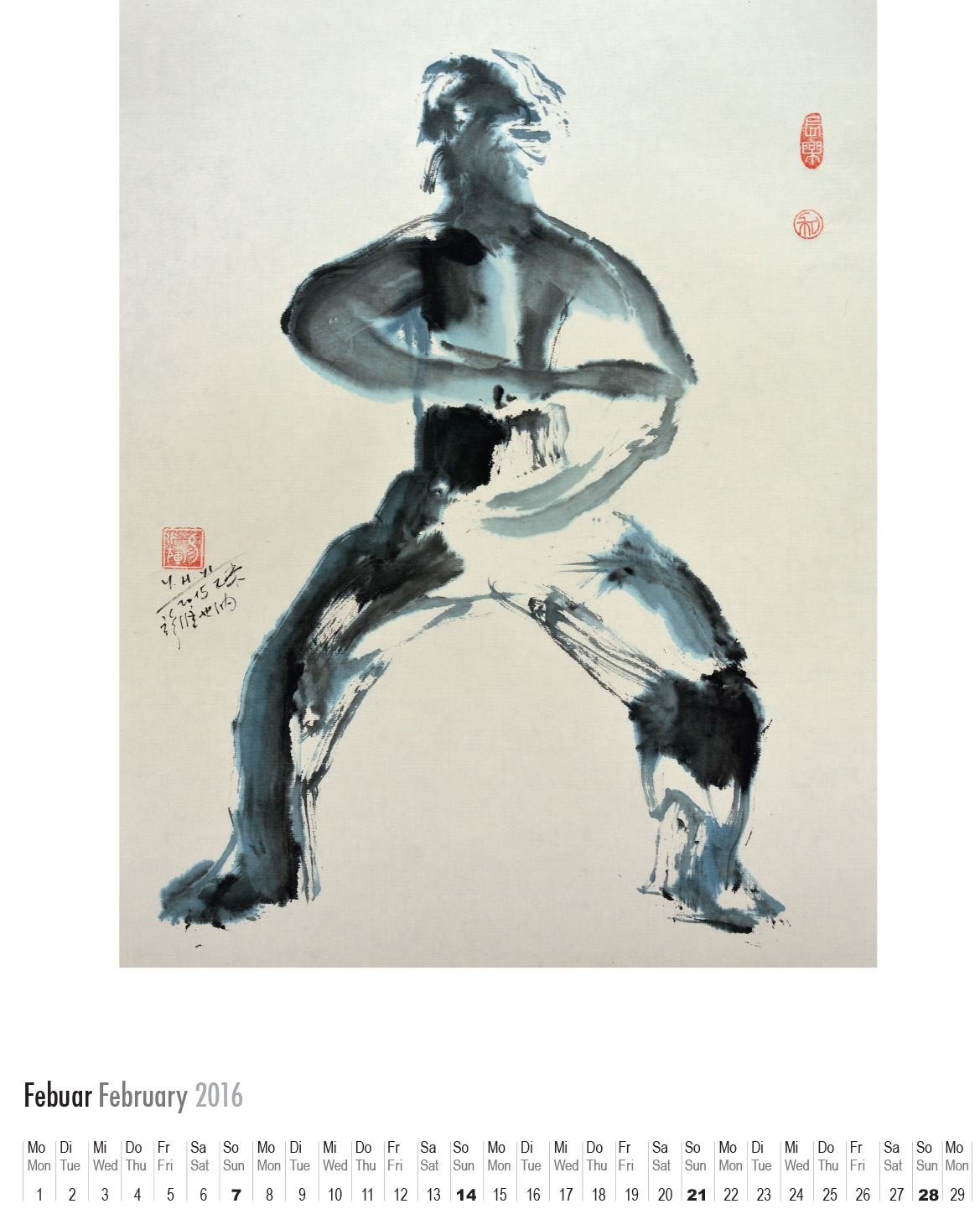In China, it is said that one should not take on the study of the sword until you have put in ten years of Tai Chi study.*

I speculate that in earlier times when they used sharp steel blades in their practice, it would have been imprudent to wave these deadly instruments about without years of supervised practice.
I feel that push hands is actually a more difficult undertaking than fencing. Think about it, while fencing we manoeuvre about with the aim of contacting the O’s arm or body with the edge or point of our wooden blade. While pushing hands, contacting some substantive part of the O’s body with our hands is only the beginning of the action.
To have someone’s hands on our body is, to many, rather more threatening than being ‘touched ’ by a wooden blade. For me fencing feels freer, lighter, and less complicated.
If you observe Tai Chi people fencing you will hear more laughter than in any other Tai Chi action, and you may have noticed if you have seen the films of Professor Cheng fencing, that he was definitely ‘amused ’ .
While ‘crossing blades’ we consistently make silly mistakes. We think when we should be responding and attack when we should be defending. We encounter unexpected brilliance, curious ironies. We experience droll excesses, put up with inflated egos and hidden agendas, enjoy subtle innuendo and engage in out and out slapstick. We are corrected, admonished, consulted and praised, all in ‘the good fight’ to please the Sword Faeries.**
*Cheng Man Ch’ing began teaching the sword form within three or four years. ** The Sword Faeries “Tengu” are mythical, part human, part bird entities that live in forests and teach the subtle points of swordsmanship to whomsoever needs or asks.
Author and Images: Ken van Sickle
German version on our sister site!
- ON BEING A MASTER – Tai Chi Sword 53
- STRANGERS – Tai Chi Sword 52
- PADDED SWORDS – Tai Chi Sword 51
- SAFETY – Tai Chi Sword 50
- PARALLELS – Tai Chi Sword 49
- Swordsmanship – SEVEN QUOTES – Tai Chi Sword 48
- TI FENG & FA JING – Tai Chi Sword 47
- SUPPOSITIONS – Tai Chi Sword 46
- LAO TZU (Laozi) QUOTES – Tai Chi Sword 45
- ETIQUETTE – Tai Chi Sword 44
- FENCING PROCESS – Tai Chi Sword 43
- STRATEGIES – Tai Chi Sword 42
- TASSELS IN THE WIND – Tai Chi Sword 41
- SHOOT FLYING GOOSE – Tai Chi Sword 40
- RHINOCEROS GAZES AT MOON – Tai Chi Sword 39
- THE MASTER SITS BACK – Tai Chi Sword 38
- FIVE APPLICATIONS – 1. BLOCK AND SWEEP – Tai Chi Sword 37
- RULES OF ENGAGEMENT – Tai Chi Sword 36
- CONSIDER – Tai Chi Sword 35
- INVITATIONS – Tai Chi Sword 34
- THE TASSEL – Tai Chi Sword 33
- THE SWORD FINGERS – Tai Chi Sword 32
- Cheng Man Ching Photographs
- THE JOINTS – Tai Chi Sword 31
- THE GRIP – Tai Chi Sword 30
- SWORD MOVEMENT – Tai Chi Sword 29
- ON ALIGNMENT – Tai Chi Sword 28
- CONCERNING THE CENTRE – Tai Chi Sword 27
- EQUATIONS – Tai Chi Sword 26
- HSIN AND CHI – Tai Chi Sword 25
- On studying – NINE QUOTES – Tai Chi Sword 24
- THE SWORD MAIDENS – Tai Chi Sword 23
- THE SWORD AND CALLIGRAPHY – Tai Chi Sword 22
- Returning – MORE THOUGHTS – Tai Chi Sword 21
- Levels of TAI CHI SWORD – Tai Chi Sword 20
- FENCING – Tai Chi Sword 19
- Transcendence – Tai Chi Sword 18
- TURNING TRICKS – Tai Chi Sword 17
- Names of CHENG MAN CH’ING’S TAI CHI SWORD – Tai Chi Sword 16
- FORCE – Tai Chi Sword 15
- DIFFERENCES – Tai Chi Sword 14
- BEGINNERS’ MISTAKES – Tai Chi Sword 13
- MIND SETS – Tai Chi Sword 12
- SENSITIVITY – Tai Chi Sword 11
- HARMONY – Tai Chi Sword 10
- TIME AND HUMOUR – Tai Chi Sword 9
- WHY AND HOW – Tai Chi Sword 8
- SWORD DIMENSIONS – Tai Chi Sword 7
- A ROYALTY OF ARMS – Tai Chi Sword 6
- KENNETH VAN SICKLE – Tai Chi Sword 4
- CHENG MAN CH’ING – Tai Chi Sword 5
- PREFACE – Tai Chi Sword 3
- Introductory Thoughts – Tai Chi Sword 2
- EDITOR’S PREFACE -Tai Chi Sword 1
- Tai Chi Sword by Kenneth van Sickle





